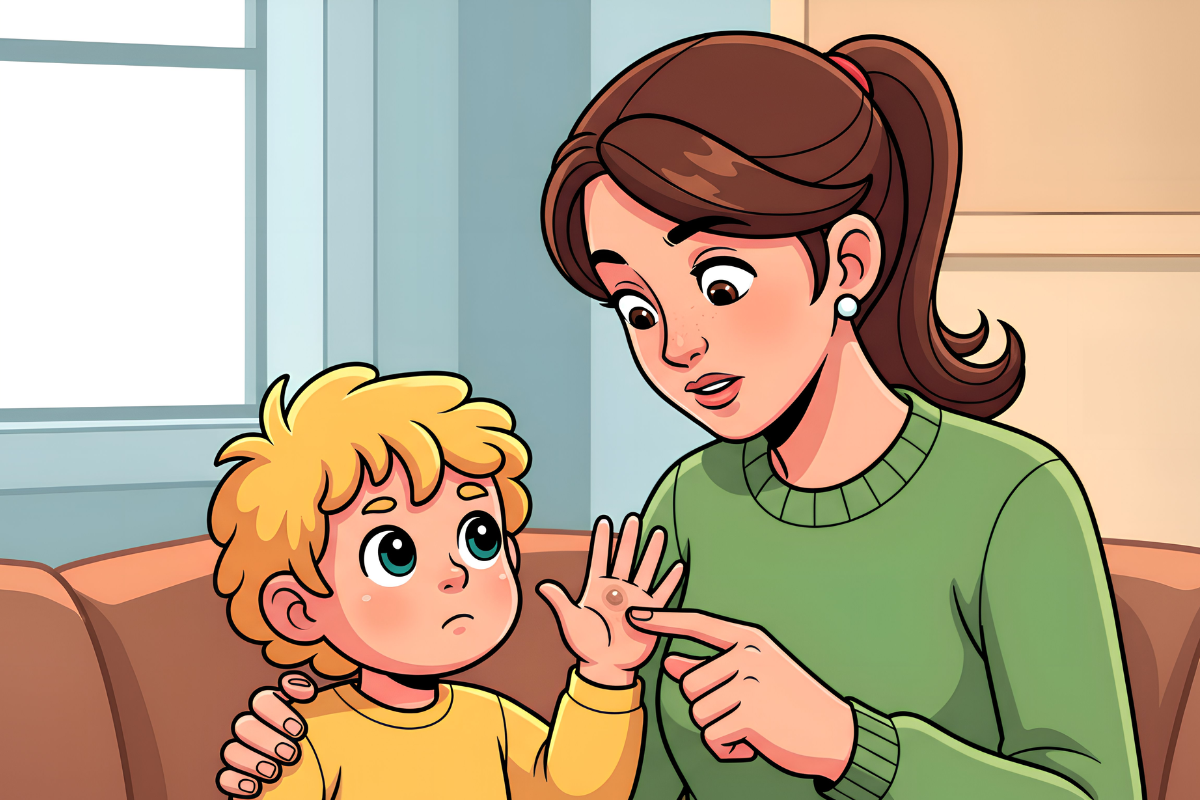Warts are a common concern among children and can cause discomfort, embarrassment, or worry for parents. While there are many treatment options available, one surprising home remedy that has gained attention is the use of duct tape. In this article, we will review what warts are, why children may develop them, how they are diagnosed, and the different treatment options available—including duct tape occlusion therapy.
At Bootin and Savrick Pediatric Associates in Houston, Texas, we have experience treating a wide range of childhood illnesses, including skin growths like warts. If your child is dealing with warts or other skin concerns, we encourage you to schedule an appointment so we can provide guidance and treatment tailored to your child’s needs.

Warts are small, noncancerous skin growths that develop when the skin is infected with the human papillomavirus (HPV). These growths are common in children and adolescents because their immune systems are still developing. Most warts are harmless, but they can be bothersome or embarrassing, especially if they appear on visible areas such as the hands, face, or feet.
Different types of warts can affect children:
Warts are caused by different strains of the human papillomavirus. Children can contract HPV through direct contact with someone else’s wart or by touching contaminated surfaces, like locker room floors or shared towels.
Other factors that increase a child’s likelihood of developing warts include:
Since HPV thrives in warm, moist environments, places like swimming pools and public showers may also expose children to the virus.
Diagnosing warts usually requires a simple physical exam by a pediatrician. During the exam, the doctor will evaluate the appearance, location, and texture of the skin growths. Most warts are easy to identify by sight, but if there is any uncertainty, additional steps may include:
This process helps rule out other skin conditions and ensures the correct wart treatment is recommended.
Although most warts eventually go away on their own, treatment may be recommended if the wart is painful, spreading, or causing emotional distress.
Some common treatment options include:
In children with sensitive skin, some treatments may be too harsh, so it’s important to work with a healthcare provider to find the best approach.
The idea of using duct tape for treating warts may sound unusual, but research suggests it can be surprisingly effective. This method, known as duct tape occlusion therapy, works by covering the wart with duct tape directly, creating an environment that may irritate the wart tissue.
Duct tape works by:
Though not every study agrees on its effectiveness, many families find this low-cost, low-risk approach worth trying before moving on to more invasive options.
To try duct tape occlusion therapy at home, follow these steps:
This cycle can be repeated for several weeks until the wart disappears. Consistency is key—skipping steps may reduce effectiveness.
While duct tape therapy is generally safe, parents should keep a few things in mind:
Parents should remember that no single wart treatment works for everyone. Sometimes, a combination of approaches—such as topical salicylic acid plus duct tape—may be most effective.
Warts are one of the most common childhood illnesses, but with the right approach, they can be managed effectively. While most warts eventually disappear, parents often prefer faster solutions, especially if warts cause pain or embarrassment.
Duct tape occlusion is a safe, inexpensive, and often successful method, but it may not work for every child. Fortunately, there are many treatment options available—from over the counter treatments to liquid nitrogen, laser treatment, and other treatment approaches.
At Bootin and Savrick Pediatric Associates in Houston, Texas, we have experience treating warts and other skin growths in children. If your child is developing warts or you’d like guidance on the safest and most effective treatment, schedule an appointment with our team today. We’ll work with you to find a comfortable, effective solution that helps your child feel confident and healthy.
Medically reviewed by Dr. Monica McGrann
